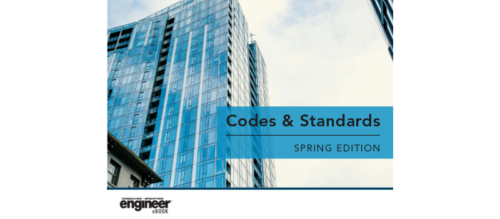National Electrical Safety Code open for comments
The 2022 National Electrical Safety Code update is focused on new issues like resiliency and distributed generation within the power grid and addressing new and viable technologies that have emerged since the last update
Learning objectives:
- Learn about the change proposals to the 2022 National Electrical Safety Code.
- Understand how the public can comment on these proposed updates.
In July 2019, IEEE and the IEEE Standards Association announced the availability of the 2022 NESC Preprint, which contains more than 500 change proposals and initial National Electrical Safety Code subcommittee recommendations. The release of the NESC Preprint initiated an eight-month window for public commentary that closes on March 1, 2020. These comments will help shape the final recommendations made by NESC Technical Subcommittees to create the 2022 NESC.
The NESC is published exclusively by IEEE and updated every five years to stay current with changes in the industry and technology. The code sets the ground rules and guidelines for the practical safeguarding of utility workers and the public during the installation, operation and maintenance of electric supply, communication lines and associated equipment.
One of the things IEEE is committed to in the efforts to update the NESC is soliciting the broadest range of input. This has proven to be fundamental to staying abreast of emerging technologies and sharing the most comprehensive and useful safety principles on a global scale.
Key proposals
A number of key proposals were submitted to update the 2022 edition of the NESC. An overview of key change proposals to the 2022 NESC includes:
- CP 5103 (Rule 010. Purpose): Currently, there’s a strong industry focus on building resiliency into the grid, a measure of how the grid withstands major weather events and how quickly service is restored. The NESC is not a design code and does not address reliability and resiliency directly. However, this change proposal suggested adding language to the purpose that points out the construction criteria within the code provide a foundational level of structural robustness that makes a positive contribution to overall system reliability and resiliency.
This change proposal was rejected as written, but modifications will be considered.
- CP 5542 (Rule 017A. Units of measure): Move metric tables and values to a normative annex.
This proposal provides easier access to the International System of Units measurement values and reduces duplication of content in the main body.
- CP 5287 (Rule 094.B.2): This CP sets the minimum diameter for driven rods of any material to 0.5 inches, a reduction for some materials from 0.625 inches.
It was noted that ground resistance and corrosion resistance of coated rods are not significantly impacted by diameter, so the larger minimum diameter is not required for safety.
- CPs 5006, 5011, 5012, 5165, 5013 and 5167 have rewritten Section 14 – Rules 140 through 146 to accommodate new battery technologies and differentiate between backup batteries and storage batteries.
- CP 5452 (Section 19): Replaces existing Section 19 with rules covering new and emerging electric generation station technologies; this first focus is on solar power photovoltaic generating stations.
- CPs 5570 (Rule 230B.4), 5571 (Rule 251.B.3) and 5104 (Appendix B) address options for eliminating the k-factor for pole loading and clearances.
- CPs 5517 and 5590 (Rule 250C): Proposal to adopt 100–year mean recurrence interval extreme wind maps published by the American Society of Civil Engineers in ASCE 7-16.
- CP 5426 (Rule 250D): Proposal to adopt 100–year mean recurrence interval map published in ASCE 74-19 for extreme ice with concurrent wind.
- CP5453 (Rule 250C): Changes application of this extreme wind rule to poles extending more than 60 feet above ground instead of excluding poles shorter than 60 feet aboveground. Also made evaluating the extreme wind case required for poles that must be built to Grade B construction and lines exceeding 22 kilovolts.
Next steps
Initial 2022 NESC recommendations were presented at the NESC Workshop that was held in October 2019 in Kansas City, Mo. The workshop featured keynote speaker Michael Deggendorf, CEO of Grid Assurance, who shared current industry information and insights from more than 30 years of experience in the energy and telecommunications industries.
The workshop also presented the status of building out the 5G network and key change proposals to the NESC with an opportunity to provide input that will help to determine the content of the 2022 edition. The workshop had an open forum, including speakers, panels and roundtable discussions addressing significant change proposals and industry issues.
All stakeholders from the engineering, utility and telecommunications industries involved in advancing electrical safety are encouraged to review the change proposals in the Preprint, as their input will have a direct impact on the final content of the 2022 NESC.
Do you have experience and expertise with the topics mentioned in this content? You should consider contributing to our CFE Media editorial team and getting the recognition you and your company deserve. Click here to start this process.




